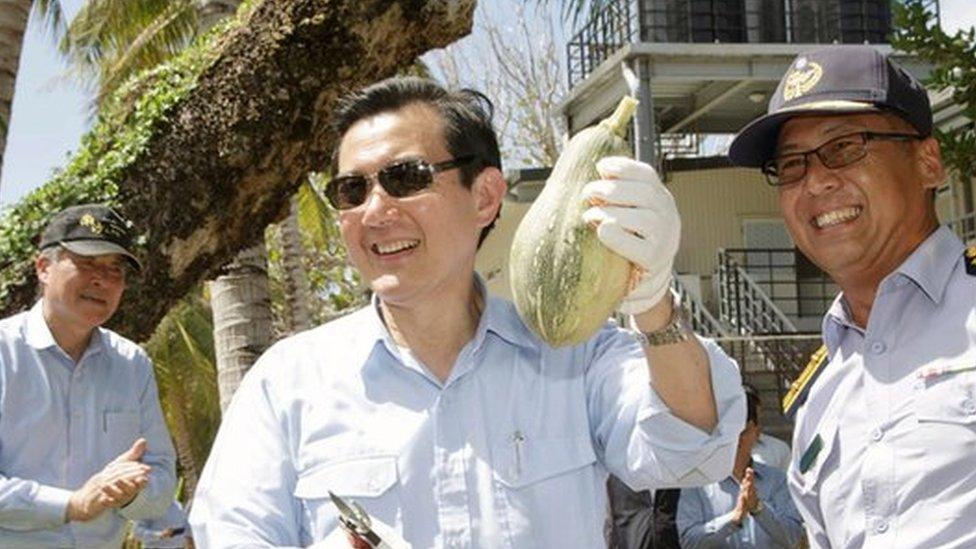China 'has deployed missiles in South China Sea' - Taiwan
- Published
Why is sovereignty of the islands disputed and how serious could the row get? Rupert Wingfield-Hayes explains
China has deployed surface-to-air missiles on a disputed island in the South China Sea, Taiwan says.
Satellite images taken on 14 February appear to show two batteries of eight missile launchers and a radar system on Woody or Yongxing Island in the Paracels.
The presence of missiles would significantly increase tensions in the acrimonious South China Sea dispute.
China's Foreign Minister Wang Yi said reports were a Western media invention.
But Mr Wang defended "the limited and necessary self-defence facilities" on islands inhabited by Chinese personnel as "consistent with the right for self-preservation and self-protection.... under the international law".
Asked about the reports, US Secretary of State John Kerry attacked China's increased "militarisation" of the contested region, saying it was a "serious concern".

Woody/Yongxing Island

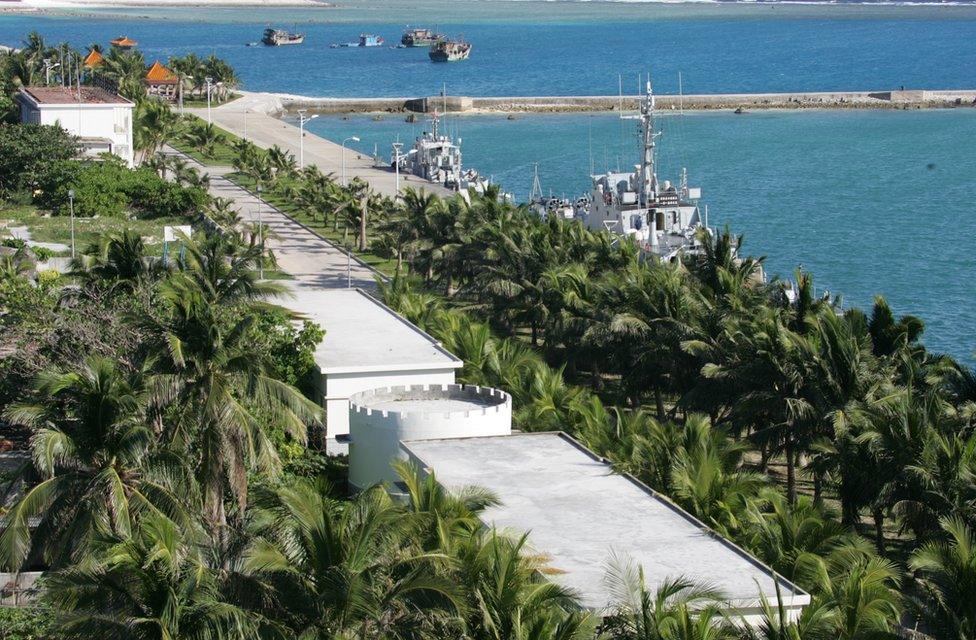

Woody Island is the largest in the Paracel archipelago, inhabited by at least 1,000 people, mostly soldiers, construction workers and fishermen
In 1956, China established a permanent presence on the island, which it calls Yongxing
In 2012, China established Sansha city local government office on the island to administer the whole South China Sea area
There is also a military garrison, a hospital, a library, an airport, a school and mobile phone coverage
The island is claimed by China, Taiwan and Vietnam

Taiwan's defence ministry said it had "learned of an air defence missile system deployed" by the Chinese on Woody Island.
It would not say how many missiles had been deployed or when, but told the BBC they would be capable of targeting civilian and military aircraft.
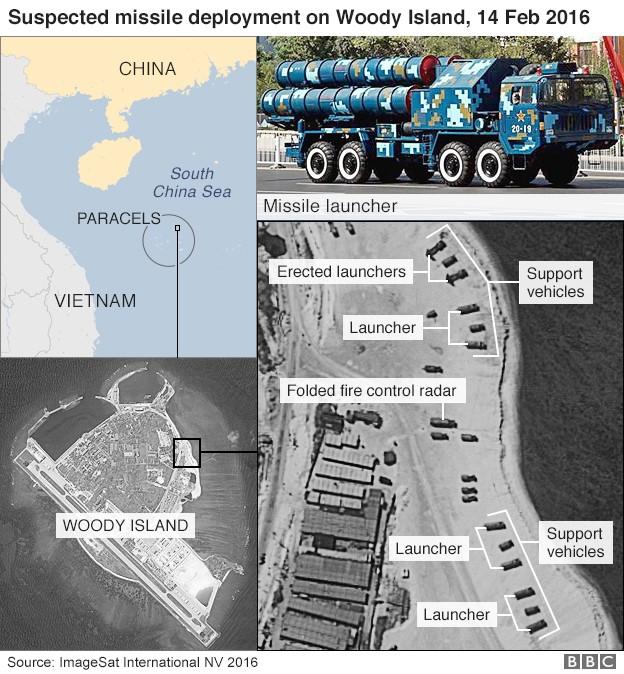
The commander of the US Pacific Fleet confirmed the deployment to Reuters news agency.
Adm Harry Harris said such a move would be "a militarisation of the South China Sea in ways" China's President Xi Jinping had pledged not to make.
Japan's Chief Cabinet Secretary Yoshihide Suga said there were "serious concerns" over China's "unilateral move to change the status quo" in the region, and "we cannot accept this fact".
China has been carrying out extensive land reclamation work in the region, which it says is legal and for civilian purposes.
But the work has angered other countries which also claim the territory, and there is growing concern about the implications of the area becoming militarised.

The latest images of Woody Island were captured by ImageSat International, external.
They show a close-up of a section of beach, the shape of which resembles the northern coastline as it appears on other images, and point out two missiles batteries. Each battery is made up of four launchers and two control vehicles.
Two of the the launchers appear to have been erected, says the report.
An image taken of the site on 3 February shows the beach empty.
Fox News quoted a US defence official as saying the missiles appeared to be the HQ-9 air defence system, with a range of about 200km (125 miles).

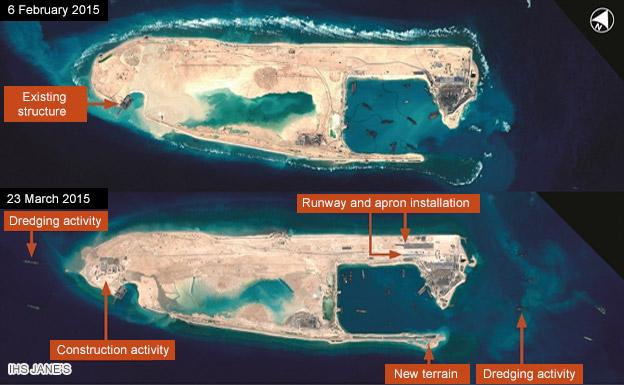
Images have also shown extensive reclamation work on islands, including Fiery Cross Reef
Analysis: Rupert Wingfield-Hayes, BBC News, Tokyo
China's deployment of long-range surface-to-air missiles to the South China Sea is a clear escalation, but it is not a surprise.
Nor is it China's first deployment of advanced military technology to Woody Island (Yongxing Dao). Last November, photos appeared on the internet of Chinese J-11 fighter jets landing on the newly-enlarged runway there.
Sending the missile batteries now could be a warning to Vietnam, or a response to the US Navy, which sailed a missile destroyer past Woody Island at the end of January.
So far Beijing has been careful not to put any weapons on its newly-constructed islands further south, in the Spratly group. That would be much more provocative.
Last month Beijing even sent two civilian airliners to land on its newly-completed runway at Fiery Cross Reef.
It was a good publicity stunt. But no one should be in any doubt that the true purpose of those new islands and their new runways is also military.

The news comes as South East Asian regional leaders end a two-day meeting in California where South China Sea had been a topic of debate.
US President Barack Obama said the members had discussed the need for "tangible steps" to reduce tensions, including "a halt to further reclamation, new construction and militarization of disputed areas".

What is the South China Sea dispute?
Rival countries have wrangled over territory in the South China Sea for centuries, but tension has steadily increased in recent years.
Its islets and waters are claimed in part or in whole by Taiwan, China, Vietnam, the Philippines, Malaysia and Brunei.
China has backed its expansive claims with island-building and naval patrols, while the US says it opposes restrictions on freedom of navigation and unlawful sovereignty claims - by all sides, but seen by many as aimed at China.
The frictions have sparked concern that the area is becoming a flashpoint with global consequences.
Although largely uninhabited, the Paracels and the Spratlys may have reserves of natural resources around them. There has been little detailed exploration of the area, so estimates are largely extrapolated from the mineral wealth of neighbouring areas.
The sea is also a major shipping route and home to fishing grounds that supply the livelihoods of people across the region.

- Published17 February 2016
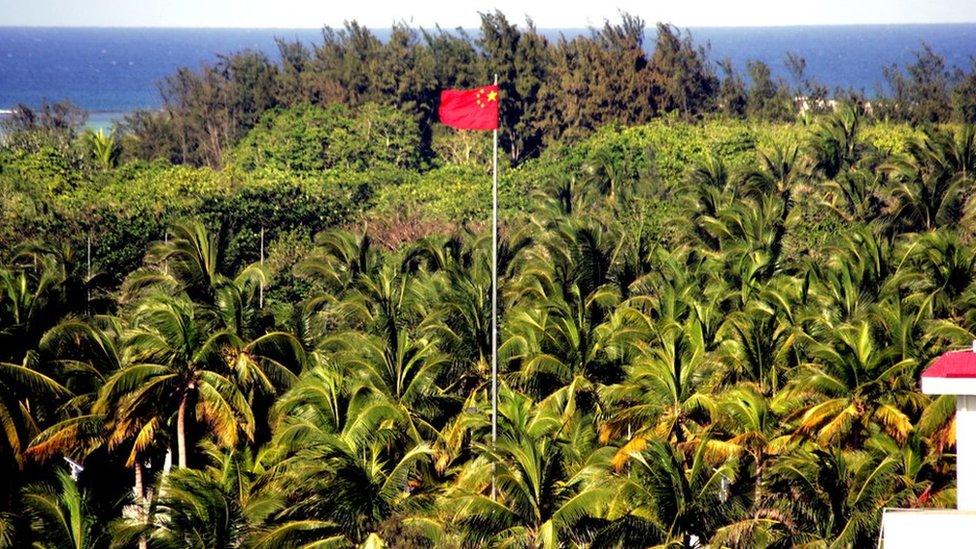
- Published14 December 2015

- Published7 July 2023
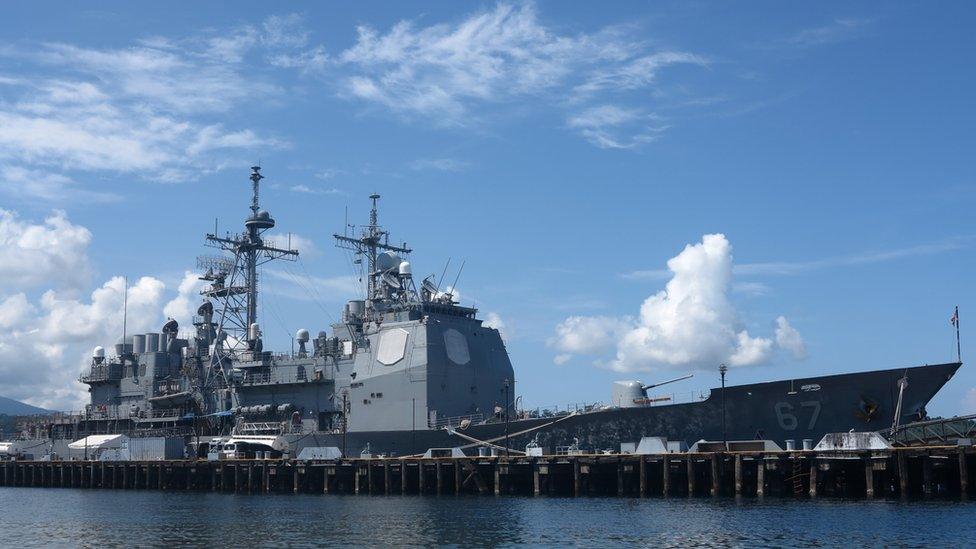
- Published30 January 2016

- Published28 January 2016
